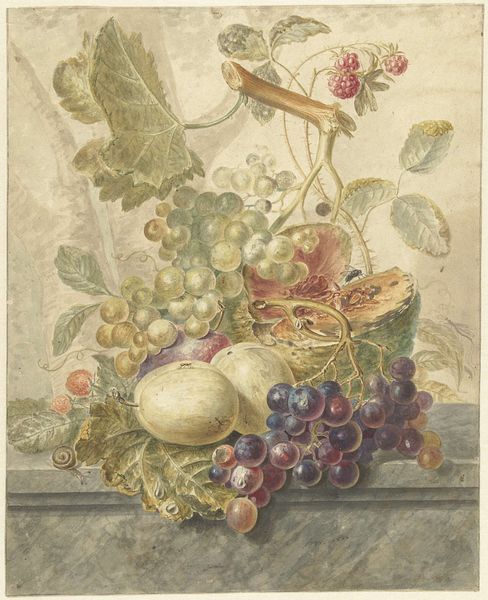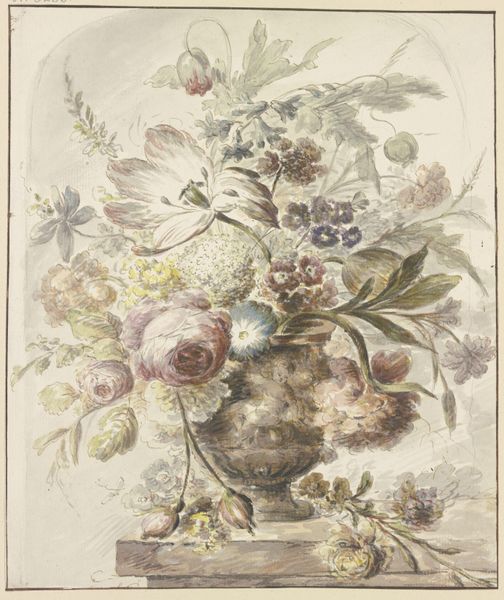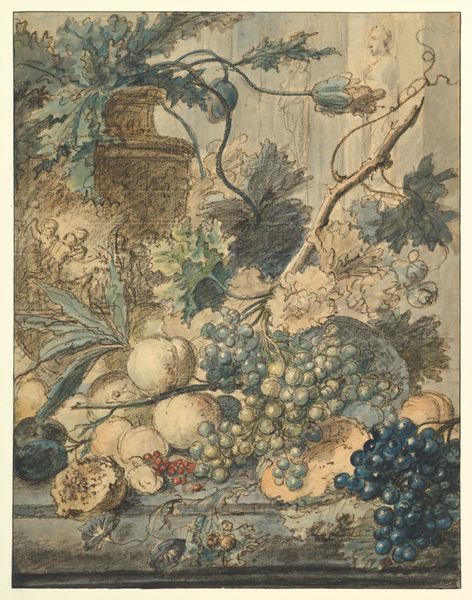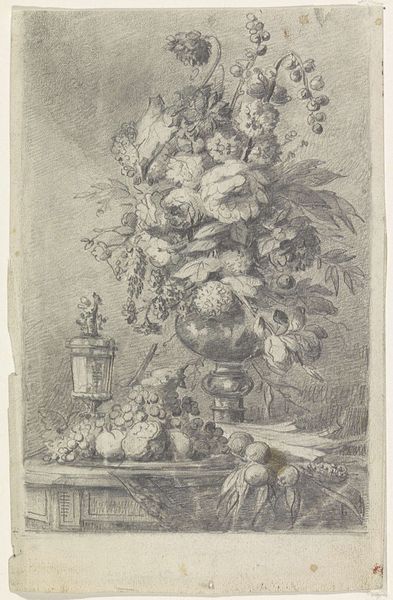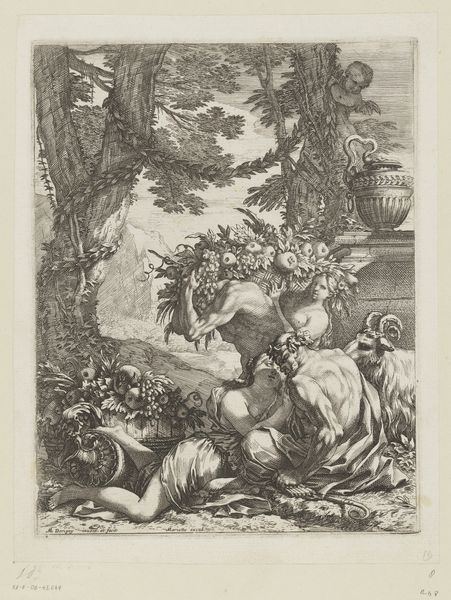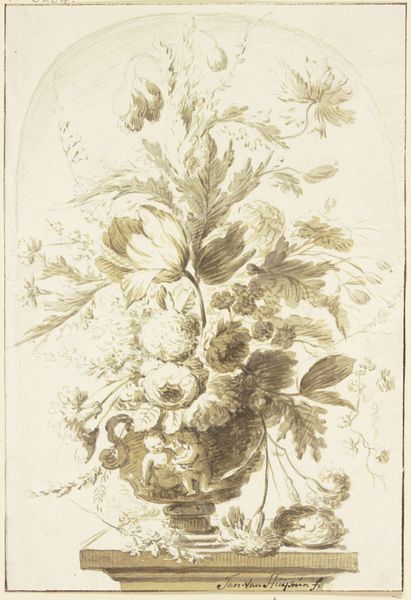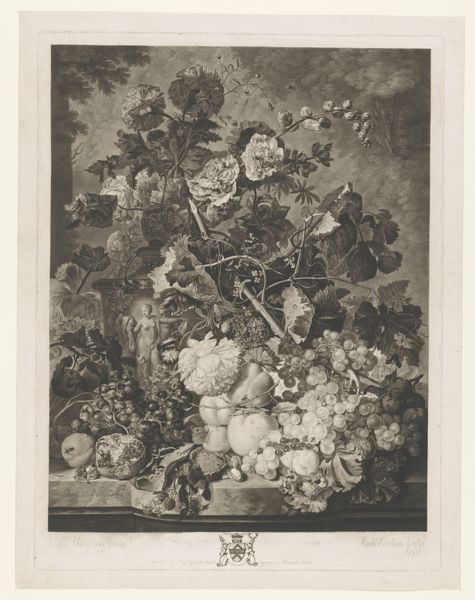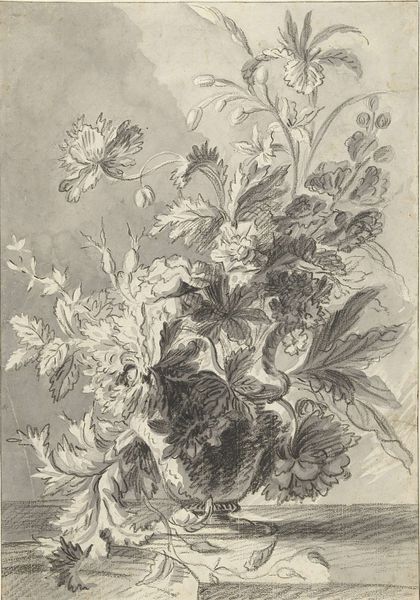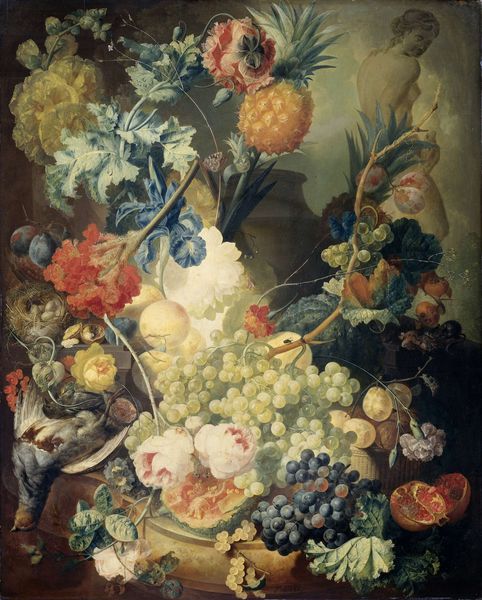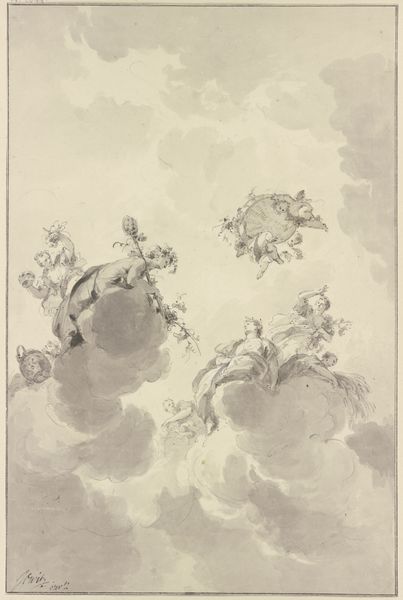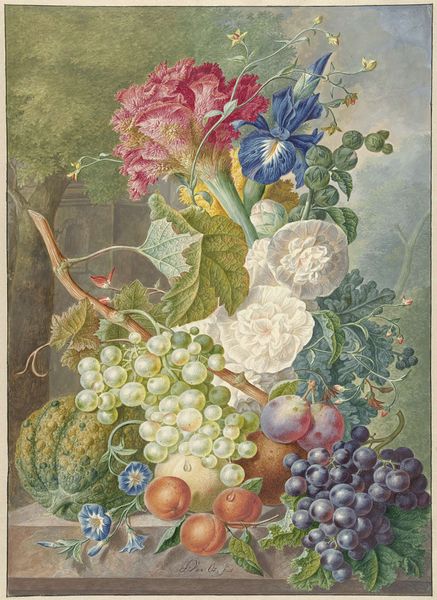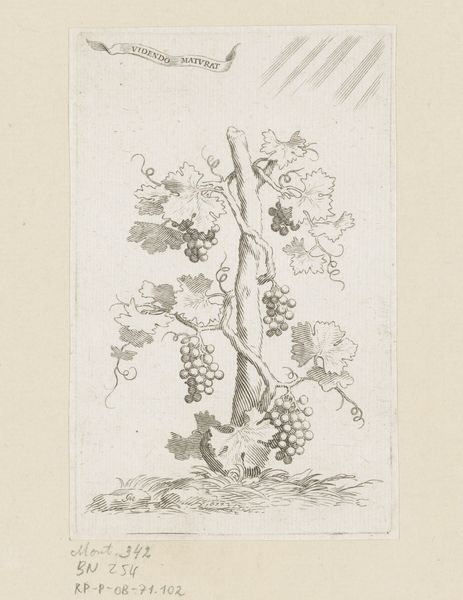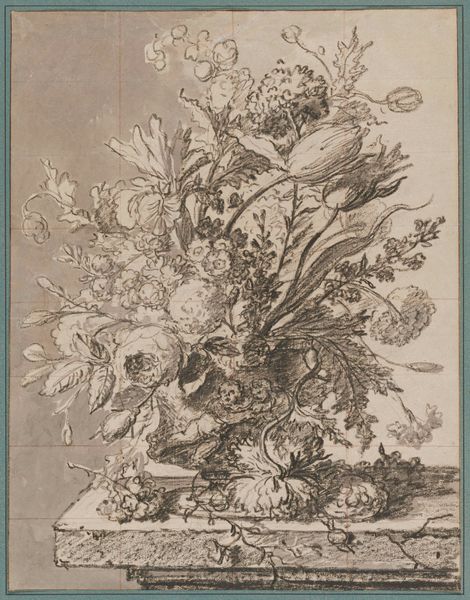
mixed-media, painting
#
mixed-media
#
baroque
#
painting
#
fruit
#
mixed medium
#
botanical art
#
mixed media
#
watercolor
Dimensions: height 408 mm, width 320 mm
Copyright: Rijks Museum: Open Domain
Jan van Huysum created this sketch for a still life of fruit and flowers, using chalk and watercolor, sometime in the first half of the 18th century. Van Huysum specialized in idealized still life paintings. The abundance and variety of the produce, the artful arrangement, and the presence of an ornate vase are typical of the genre. It flourished in the Netherlands during a time of great wealth. Dutch merchants had become rich through global trade. The still life paintings celebrated nature's bounty but they also served as emblems of worldly success. It is worth remembering the power of the Dutch Masters to shape the art market of the time, helping to raise the status of painters, their dealers and their collectors. To fully understand the values that underpinned this culture, we might consult period inventories of household goods, the archives of merchant trading companies, and early art criticism.
Comments
rijksmuseum about 2 years ago
⋮
Jan van Huysum made this drawing with a stick of charcoal soaked in linseed oil. This material was traditionally recommended for drawing sketches. The oil prevents the drawn lines from blurring and lends them greater intensity. The drawing served as a model for a painting. Van Huysum here indicated the most important colours in transparent watercolour.
Join the conversation
Join millions of artists and users on Artera today and experience the ultimate creative platform.
